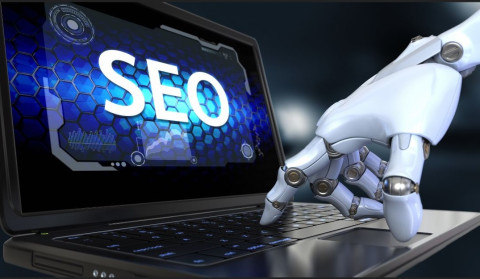Forecasting the Future: Exciting Website Design Trends for 2024
As we move through 2024 the digital landscape continues to evolve, bringing new and innovative design trends to the forefront of website creation. These trends are not just about aesthetics; they're about enhancing user experience, improving accessibility, and leveraging technology to create more dynamic and interactive environments.
1.Sustainability in Web Design
Sustainability is becoming a more significant concern across all industries and web design is no exception. In 2024 we'll see a focus on eco-friendly websites designed to have lower carbon footprints. This includes optimising images and videos for faster loading times, choosing green hosting providers, and minimising the use of data-intensive features.
Sustainability is becoming a key consideration in web design, reflecting wider societal shifts towards environmental awareness. Eco-friendly designs often incorporate natural colour schemes and minimalist layouts, reducing digital clutter and emphasising efficiency. This trend aligns with the values of environmentally conscious users, offering designs that are both aesthetically pleasing and ethically grounded.
2.Minimalist Navigation
Minimalism in web design embodies the principle of less is more. It aims to strip away superfluous elements, focusing on essential features using limited colour palettes, uncluttered layouts, and ample whitespace.
As screen sizes vary and attention spans shorten, minimalist navigation will gain traction. Expect to see more websites adopting clean, simple navigation menus that prioritise ease of use and declutter the user interface. Hamburger menus, hidden menus, and single-page designs with anchor links will become more prevalent, helping users find what they need without overwhelming them with options.
Minimalistic navigation in web design refers to a navigation setup that emphasises simplicity and functionality. It typically involves the use of fewer design elements, focusing instead on typography, placement, and subtle design cues like line work to guide users. This approach helps make the navigation of a website more intuitive and less cluttered, providing a cleaner and more focused user experience.
3.Designed for Mobile first
In 2024, we mark the iPhone's 17th anniversary, recognising its pivotal role in web design's evolution towards mobile-first approaches, catering to ubiquitous mobile activities. This paradigm shift, from optimising websites for mobile post-design to prioritising mobile interfaces from the start, offers numerous benefits: enhanced user experiences on mobile devices, quicker site loading, streamlined content delivery, broader audience engagement, improved SEO rankings due to mobile-first indexing, reduced maintenance needs through unified responsive designs, better scalability for future devices, and stronger social media integration. Adhering to a mobile-first strategy ensures websites meet modern user expectations and search engine standards.
4.Inclusive and Diverse Imagery
Inclusivity and diversity will continue to be significant themes in web design, with a focus on representing a wide range of cultures, genders, ages, and body types in website imagery and content. This trend is about more than just visual representation; it's about creating a web that feels welcoming and accessible to everyone, reflecting the diverse world we live in.
Multi-sensory experiences in website design aim to engage users through various sensory modalities beyond just visual and auditory stimuli. By incorporating elements such as haptic feedback, tactile interactions, and scent-based cues, designers can create immersive and memorable experiences that appeal to multiple senses simultaneously. These experiences go beyond traditional web design by providing users with a more holistic and enriching interaction that stimulates their senses and evokes emotional responses. Whether it's through the use of subtle animations, interactive elements, or integration with IoT devices, multi-sensory design enhances user engagement, fosters deeper connections with brands, and leaves a lasting impression on visitors, ultimately leading to a more immersive and impactful user experience.
5.Multi-sensory Experiences
As technology advances, websites will begin to offer multi-sensory experiences, engaging not just sight and sound but also touch and even smell. This could be through haptic feedback devices, scent diffusers compatible with digital platforms, or immersive audio experiences that change based on user interactions. These innovations aim to create a more immersive and engaging online environment.
6.Inclusive and Accessible Design
Inclusivity and accessibility will continue to be a significant focus in 2024 and beyond. This means designing websites that are usable for everyone, including people with disabilities. Expect to see more sites adhering to WCAG (Web Content Accessibility Guidelines), with features like keyboard navigation, voice commands, contrast adjustment, and alternative text for images becoming more prevalent.
Inclusive and accessible design in web design emphasises creating digital experiences that cater to the widest possible audience, regardless of physical or cognitive abilities. This design philosophy focuses on removing barriers and ensuring that all users can access and interact with digital content effectively. Key principles include implementing clear and concise navigation, providing alternative text for images and multimedia, optimising colour contrast for readability, and ensuring compatibility with assistive technologies such as screen readers and keyboard navigation. By prioritising inclusivity and accessibility, web designers can foster a more equitable online environment, enabling everyone to participate fully in the digital world and providing an enriching experience for all users.
7.Voice-Activated Interfaces
As voice search technology continues to improve, voice-activated interfaces will become more common on websites. This trend is about making web content more accessible and creating a hands-free user experience. In 2024, websites that incorporate voice search functionality and voice-command navigation will provide a cutting-edge user experience, particularly for mobile users.
Google reports that 20% of mobile searches are conducted through voice, while Comscore predicts that 50% of all searches will be voice-based by 2025. Clearly, voice search is not only prevalent but also on the rise.
This indicates that businesses should prioritise optimising for voice search to maintain a competitive edge. But what exactly is voice search? It involves using one's voice to search for information online.
For instance, instead of typing "pizza delivery near me" into a search engine, one would say, "Hey Siri, find me a pizza place that delivers." Siri would then present a list of nearby pizza companies that offer delivery services.
While these search results may appear routine, they represent a significant shift for businesses. This is because people employ different languages when speaking compared to typing.
For instance, while typing, individuals might use abbreviations or acronyms (e.g., "Pizza place in NYC that delivers late night?"). However, in voice searches, they use natural language (e.g., "Find me a pizza place in New York City that delivers late at night").
To be discoverable via voice search, businesses must optimise their websites for natural language. This process involves understanding how people speak and predicting their likely search queries.
8.Personalised User Experiences
Personalisation is set to become more sophisticated in 2024, with websites using AI and machine learning to deliver content tailored to individual users. This could range from personalised product recommendations to dynamic content adjustments based on user behaviour, time of day, or geographic location. This level of personalisation not only improves user engagement but also makes the browsing experience more relevant and enjoyable for each visitor.
Website personalisation stands as one of the most potent tools at the disposal of website owners. Essentially, it involves tailoring the content and design of a website to match the preferences of individual users, thereby creating a unique experience for each visitor.
But why invest effort in personalising a website when one can simply create compelling content that appeals to a broad audience? The answer lies in its efficiency. Research conducted by Adobe revealed that 78% of consumers are more inclined to make purchases from retailers offering personalised experiences.
Recall the last instance when you visited a website and felt a strong sense of connection with the company. Perhaps they recommended products based on your previous purchases or displayed relevant content tailored to your location. Whatever the case, it left a positive impression on you and likely encouraged your return.
9.Immersive 3D Elements
The integration of 3D elements into web design has been gaining momentum, and in 2024 we expect to see it explode in popularity. This trend goes beyond simple 3D icons and graphics, moving towards fully immersive 3D environments that allow users to interact with the site in more engaging ways. Think of web pages that offer a virtual reality experience, where users can navigate a 3D space, exploring products, services, or information as if they were physically moving through it.
Immersive 3D elements in web design represent a revolutionary leap in user engagement and interactivity. By incorporating three-dimensional graphics, animations, and effects into the online environment, websites can transport users into captivating digital worlds. These elements create an immersive experience that goes beyond traditional flat design, enticing visitors to explore and interact with content in dynamic and visually stunning ways. Whether it's navigating through virtual environments, interacting with lifelike objects, or experiencing immersive storytelling, 3D elements elevate web design to new heights, offering unparalleled levels of engagement and immersion for users across various platforms and devices.
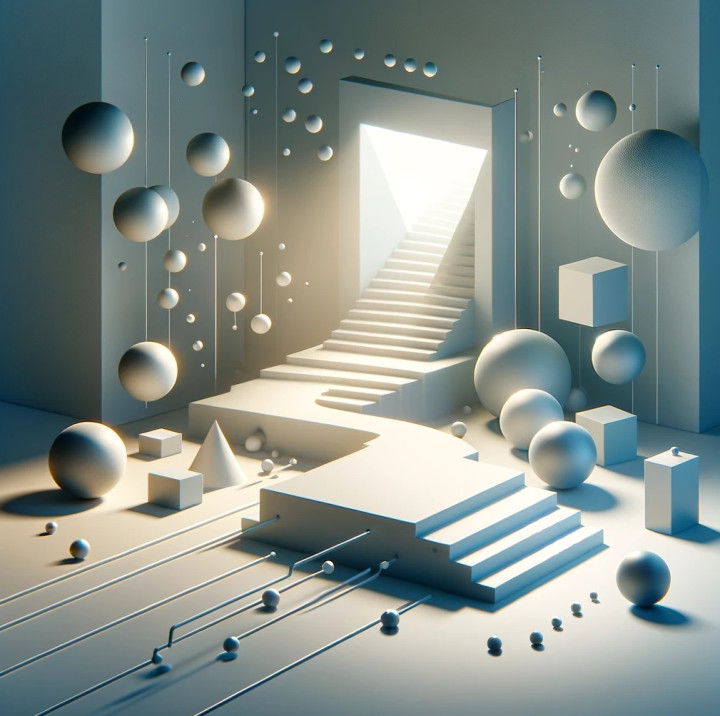
10.Dark Mode Aesthetics
Dark mode is a colour scheme featuring light-coloured text, icons, and graphical user interface (GUI) elements against a dark background. Since iOS 13's release, dark mode has gained popularity, a trend expected to persist in 2024. Its implementation aims to impart an elegant and sophisticated appearance to websites and designs.
Beyond being a stylistic choice, dark mode offers practical benefits like reduced eye strain and lower battery consumption on mobile devices. Designers are getting more creative with their approach to dark mode, incorporating neon accents, vibrant colour contrasts and shadow play to create depth and dimension.
In web design, dark mode serves as an aesthetic choice, evoking a sense of elegance, style, and modernity. When utilised effectively, it can set a website apart from competitors.

11.Advanced Micro-Interactions
Micro-interactions have always been a crucial element in enhancing the user experience. In 2024, we anticipate these interactions to become more sophisticated, incorporating more detailed animations and feedback responses. These tiny, dynamic interactions will not only provide users with better clarity and engagement but also contribute to a website's personality, making digital experiences feel more human and reactive.
This can include buttons, error messages, form labels, instructions, and any other brief text that helps improve user experience by making the interface more intuitive and informative. When used in the right places, microcopy can turn a mundane task into something memorable.
A great audible example is the ‘caching’ sound you get when someone pays for an item you have sold on eBay.
Examples of microcopy include:
- Button Texts: Instead of just "Submit" on a form, using "Send My Feedback" provides more context.
- Error Messages: Instead of a generic "Error occurred," more helpful microcopy would be "Your password needs to be at least 8 characters."
- Form Field Labels and Instructions: Instructions like "Enter your full email address, e.g., [email protected]" make it clear what's expected.
- Loading Messages: Instead of just "Loading," saying "Hang tight! We're fetching your data" adds a personal touch.
- Empty States: Text in an empty shopping cart saying, "Your cart feels lonely" with a "Start Shopping" button.
- Confirmation Messages: After a form submission, "Thanks! We've received your application and will get back to you within 48 hours."
- Conversational UI refers to interfaces that mimic human conversation, making user interaction feel more natural and intuitive. These can be found in chatbots, voice-activated assistants, and other interactive platforms.
- Onboarding Guides: Interactive guides in apps that converse with new users as if they were being personally coached through the setup process.
Both microcopy and conversational UI play crucial roles in the user experience, guiding, informing, and engaging users in a way that feels personal and intuitive.
12.Motion and Interactivity
Motion design, including subtle animations, page transitions, and interactive elements, will continue to be a significant trend. These features can guide users through the site, draw attention to important content, and make the overall experience more dynamic and engaging. The key for 2024 will be balancing motion with performance, ensuring that animations enhance rather than hinder the user experience.
Integrating motion within web design not only directs a viewer’s attention but also adds depth, transforming static pages into vibrant narratives. This strategic use includes interactive backgrounds for immersive experiences, such as animated seascapes on travel sites, enhancing the sense of journey. Hover animations on buttons or images offer intuitive feedback, improving interaction. Storytelling elements unfold through scrolling, engaging users with historical timelines or narratives, while animated data visualisations turn complex information into captivating visuals. As trends evolve, leveraging motion design innovatively will continue to enrich user experiences and foster creativity.
13.Advanced Storytelling
Websites in 2024 will lean more towards storytelling, using a combination of visuals, text, and interactivity to engage users and communicate their message. This can be particularly effective for brands looking to establish a strong identity and emotional connection with their audience. Expect to see more use of sequential narratives, interactive storytelling, and multimedia elements to weave compelling stories throughout the website.
Emotional design focuses on creating experiences that resonate with users on a personal level. By leveraging colour, imagery, and typography that evoke specific feelings or attitudes, designers can forge deeper connections with their audience. This trend underscores the importance of storytelling in design, where every element works together to convey a brand's identity and values.
While aesthetics and functionality also play vital roles, the narrative behind a website can make all the difference in creating a truly immersive user experience; From captivating users’ attention to forging emotional connections and enhancing brand messaging, storytelling holds the key to unlocking the full potential of your online presence.
- Good stories are simple.
- Good stories are emotional.
- Good stories are truthful or believable.
- Good stories are real.
- Good stories are valid and work for almost any audience.
Example:
Snickers: “You're Not You When You're Hungry”
Snickers has developed a unique and humorous approach to brand storytelling with its famous "You're Not You When You're Hungry" campaign. By depicting celebrities and fictional characters in funny situations when they're hungry, the candy bar brand taps into the universal experience of hunger-induced mood swings.
With brand storytelling, you can:
- Create an emotional bond with your audience
- Differentiate your brand and enhance memorability
- Build trust and encourage engagement and sharing
- Clarify the brand's message and influence purchase decisions
14.Augmented Reality (AR) Experiences
With advances in web technologies like WebXR, augmented reality experiences will become more common on websites. This could range from virtual try-ons for e-commerce sites to interactive AR tours for real estate or travel websites. By integrating AR directly into web platforms, businesses can offer unique and immersive experiences that enhance user engagement and decision-making.
Augmented Reality (AR) experiences in web design represent an innovative fusion of digital and physical worlds, offering users interactive and immersive encounters directly within their web browsers. Leveraging AR technology, websites can superimpose virtual elements onto real-world environments, allowing users to visualise products, try on virtual clothing, or explore virtual spaces from the comfort of their own homes. This cutting-edge approach not only enhances engagement but also provides valuable opportunities for businesses to showcase their products and services in a more compelling and interactive manner. By integrating AR experiences into web design, designers can create memorable and impactful interactions that captivate users, foster brand loyalty, and drive conversions, ushering in a new era of dynamic and experiential web experiences.
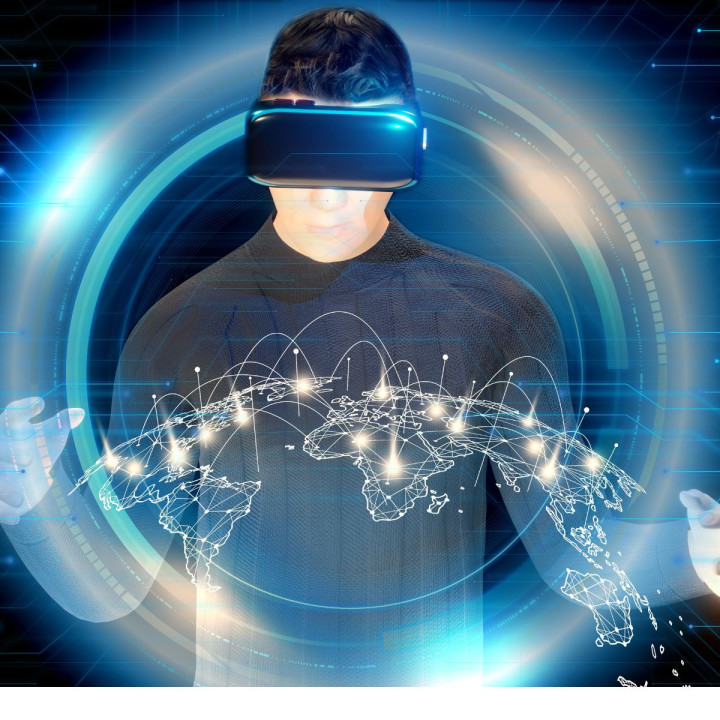
15.Full-Screen Forms
Forms are a crucial part of any website, whether for signing up to a service or contacting a business. In 2024, full-screen forms will become more popular, moving away from the traditional small, boxy forms. These larger, more engaging forms are designed to improve user experience by reducing distractions and making it easier for users to focus and complete their submissions.
Full-screen forms in web design offer a streamlined and immersive user experience by dedicating the entire screen space to the form interaction. This design approach eliminates distractions and focuses the user's attention on the task at hand, whether it's filling out a registration form, completing a survey, or making a purchase. By utilising the full screen, designers can optimise the layout and typography for readability and usability, ensuring that users can easily navigate and input information. Additionally, full-screen forms often incorporate responsive design principles, adapting seamlessly to various screen sizes and devices. This design technique enhances engagement, reduces friction in the user journey, and ultimately leads to higher completion rates for form submissions, contributing to an overall positive user experience.
16.Scrolling Transformations (Parallax Scrolling)
Scrolling is evolving from a mere necessity to a dynamic design element. In 2024, expect to see scrolling transformations that change colours, trigger animations, or shift the layout as the user moves down the page. This trend adds an element of surprise and engagement, encouraging users to continue scrolling to discover new content.
In web design, parallax scrolling creates depth by moving background images slower than those in the foreground. This technique, enhancing website dynamism and storytelling, remains popular. Designers should ensure content compatibility and use parallax judiciously to avoid navigation issues. Proper use enhances user engagement and immersion. Expect continued innovation with this technique.
17.AI-driven Chatbots and Assistants
DID YOU KNOW
The market size is expected to show an annual growth rate (CAGR 2024-2030) of 14.14%, resulting in a market volume of US$26.53bn by 2030. (Statista.com)
Artificial intelligence will play an increasingly prominent role in website design, particularly through the use of AI-driven chatbots and virtual assistants. These tools can provide instant support, answer questions, guide users through the site, and even assist with transactions, all without human intervention. In 2024, expect these AI features to become more nuanced and human-like, providing a seamless and helpful user experience.
In recent years, chatbots have seen a surge in popularity as effective tools for website communication, adept at rivalling human conversation. These chatbots are predominantly utilised for tasks such as customer service provision and lead generation.
Their adoption brings forth numerous advantages:
- 24/7 Availability: Unlike human representatives, chatbots operate round the clock, ensuring continuous support for users irrespective of time zones. This constant accessibility is particularly advantageous for businesses catering to international clientele or spanning multiple regions.
- Quick Responses: Chatbots excel in delivering swift responses to user queries. Freed from the limitations of human necessities like breaks or rest, they provide instantaneous assistance, contributing to seamless user experiences and heightened satisfaction levels.
- Cost Savings: Integrating chatbots can lead to substantial cost savings compared to traditional customer service avenues like call centers. Their automated functionality allows them to handle a significant volume of inquiries without incurring additional staffing costs.
To optimise the effectiveness of chatbots, consider the following:
- Simplicity: Design chatbots to handle straightforward tasks effectively, such as providing information or answering frequently asked questions (FAQs), to avoid user confusion and maximise usability.
- Natural Language Processing (NLP): Incorporate NLP techniques to train chatbots in understanding and interpreting various forms of user inquiries, enhancing their ability to provide accurate and relevant responses.
- Data Utilisation: Leverage the data collected by chatbots to gain insights into customer preferences, behaviours, and pain points. This invaluable information can inform marketing strategies, product development initiatives, and overall business decision-making processes.
18.Neomorphism
Neomorphism blends background colours, shapes, gradients, and shadows to mimic physicality through soft, plastic-like designs.
Neomorphism, a rising trend in web design, blends elements of skeuomorphism and flat design to create a distinctive visual style characterised by soft shadows, subtle highlights, and minimalist aesthetics. It employs gentle gradients and shadowing to mimic the appearance of physical objects, imparting a sense of depth and tactility to digital interfaces. This approach fosters a modern, futuristic look while maintaining a clean and intuitive user experience. Neomorphic elements, with their soft, ambient lighting and subtle dimensionality, add a touch of sophistication and elegance to web interfaces, enhancing visual appeal and inviting users to engage with content in a more tactile and immersive manner.
19.Glassmorphism
Glassmorphism focuses on transparency (frosted-glass effect) and multi-layered approaches, offering depth and texture while maintaining a lightweight and clean aesthetic. These styles contribute to a futuristic yet accessible user interface.
Glassmorphism, a design trend gaining traction in web design circles, draws inspiration from frosted glass surfaces to create sleek and modern user interfaces. Characterised by translucent panels, blurred backgrounds, and subtle gradients, it imparts a sense of depth and elegance to digital interfaces. This aesthetic employs vibrant colours and dynamic lighting effects to simulate the appearance of glass, resulting in interfaces that feel both sophisticated and approachable. By incorporating elements of realism and translucency, glassmorphism adds visual interest and depth to web design, enhancing user engagement and creating a memorable user experience. This trend represents a departure from the flat design ethos, offering a refreshing take on interface design that combines contemporary aesthetics with intuitive functionality.
20.Neumorphism (Soft UI)
Neumorphism blends the physical and digital worlds through a design aesthetic that mimics real-world materials and textures. This trend, characterised by subtle shadows, rounded corners, and a limited colour palette, creates a soft, tactile experience that invites interaction. It's a nuanced approach that adds depth and sophistication to digital interfaces.
Neumorphism, a burgeoning trend in web design, epitomises a minimalist yet futuristic aesthetic characterised by soft shadows, subtle highlights, and a focus on simplicity. Drawing inspiration from skeuomorphism and flat design, neumorphism seeks to create interfaces that mimic physical objects while maintaining a clean, modern appearance. With subdued shadows and gradients, resulting in a softer, more understated visual effect. This approach fosters a sense of depth and tactility, inviting users to interact with interfaces in a more intuitive and immersive manner. Neumorphic design elements, with their minimalist yet elegant styling, add a touch of sophistication to digital interfaces, enhancing usability and elevating the overall user experience.
21.Skeuomorphism
Skeuomorphismis, a term most often used in graphical user interface design to describe interface objects that mimic their real-world counterparts in how they appear and/or how the user can interact with them. A well-known example is the recycle bin icon used for discarding files.
For instance, a skeuomorphic design might include a digital notepad that resembles a physical paper pad, complete with lines, shadows, and the texture of paper, or an on-screen calculator that looks like its handheld physical version, with buttons and displays that mimic the real thing. This design philosophy helps bridge the gap between digital and physical worlds, making technology more accessible, especially for first-time users or those transitioning from non-digital to digital platforms.
22.Bold and Experimental Typography
Typography is stepping into the limelight in 2024, with designers embracing bright colours, bold and experimental styles. Oversized lettering, innovative font combinations, and a nod to retro typography are shaping the way we interact with digital content. Such typographic choices not only grab attention but also improve readability and navigation, guiding users through a site with ease and flair.
The use of vivid hues and oversized fonts is not just a stylistic choice but a strategic one, aimed at capturing attention and conveying messages more effectively. This trend is about daring to stand out and making a statement through design.
23.Fluid Shapes and Patterns
While geometric shapes have been popular for some time, 2024 will see a shift towards more fluid, organic shapes and patterns. This trend reflects a move away from the rigid, grid-based designs of the past, embracing instead more natural, asymmetrical, and flowing elements that add depth and movement to the web design.
Moving away from rigid grid layouts, the use of abstract and organic shapes introduces fluidity and dynamism to web pages. These elements break the mould of traditional design, offering a more relaxed and engaging visual experience that mimics the irregularities found in nature. This approach to design adds a layer of creativity and uniqueness to websites, making them stand out in a digital sea of sameness.
Perfectly imperfect designs are on the rise. Hand-drawn illustrations, asymmetrical layouts, and organic shapes break away from the rigid structure, adding a human touch to websites. Embracing imperfection fosters uniqueness and authenticity.
Illustrations are gaining popularity in web design as they infuse sites with personality and flair. Increasingly, websites are opting for illustrations over traditional photos, a trend expected to continue flourishing in 2024.
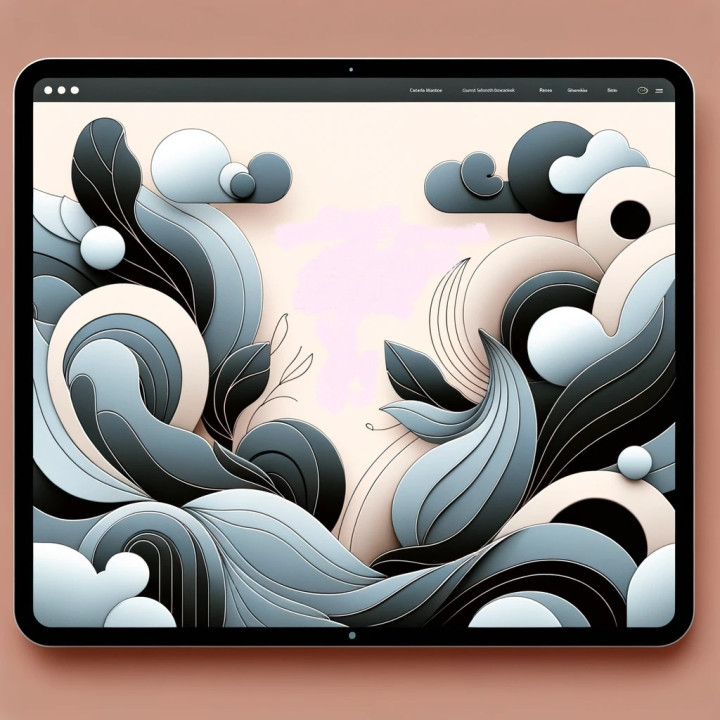
24.Content Layering and Depth
Layering content using shadows, overlays, and floating elements can create a sense of depth that makes web pages more engaging. This design trend, inspired by material design principles, adds dimension to flat layouts, making them more dynamic and interesting. Expect to see more websites using depth effects to highlight important content and guide users through their journey.
Content layering and depth in website design involve the strategic organisation of information and visual elements to create a sense of depth and hierarchy within the user interface. By employing techniques such as overlapping elements, parallax scrolling, and shadow effects, designers can simulate a three-dimensional space that guides users' attention and enhances their navigation experience. This approach allows for the presentation of complex information in a structured and visually appealing manner, enabling users to engage with content more intuitively and effectively. Additionally, content layering facilitates storytelling and visual storytelling, as it allows designers to convey narratives through the arrangement and sequencing of elements. By incorporating depth and layering into website design, designers can create immersive and dynamic experiences that captivate users and elevate the overall user experience.
25.Gradients
Gradients in web design create a visual spectrum, transitioning between two or more colours. They add depth, dimension, and visual interest, making elements like backgrounds and buttons more dynamic. Effective gradient usage involves selecting complementary colours and deciding on the transition's direction and intensity. This can evoke moods or highlight content. Experimentation is crucial; mix and match colours and directions to find the perfect blend for your design, ensuring it enhances user experience and website aesthetics.
Gradients in website design have experienced a resurgence in popularity, offering designers a versatile tool for creating depth, visual interest, and modern aesthetics. By blending two or more colours seamlessly, gradients can add a sense of dimensionality to flat designs, infusing them with depth and sophistication. Whether used subtly to add subtle texture or boldly to create vibrant visual impact, gradients can evoke various emotions and establish a cohesive visual identity for a website. Moreover, gradients can be employed across different elements, including backgrounds, text, buttons, and illustrations, allowing for endless creative possibilities. With their ability to enhance user engagement and provide a visually appealing experience, gradients have become a staple in contemporary web design, enriching interfaces and captivating audiences worldwide.
Our highly skilled custom web developers can ensure websites remain at the forefront of digital innovation, providing users with memorable, effective, and enjoyable online experiences.
However, it's equally important to keep in mind the sustainability of your website and ensure it aligns with your brand's values, products, or services. Sustainability in web design involves optimizing site performance, minimizing environmental impact, and adhering to ethical design practices. By prioritizing sustainability, brands can demonstrate their commitment to social and environmental responsibility while enhancing user experience.
Additionally, maintaining alignment with brand values ensures consistency across all touchpoints, reinforcing brand identity and fostering trust with users.
By striking a balance between innovation, sustainability, and brand alignment, we create websites that not only captivate audiences but also reflect your brand's ethos and contribute positively to the digital landscape.
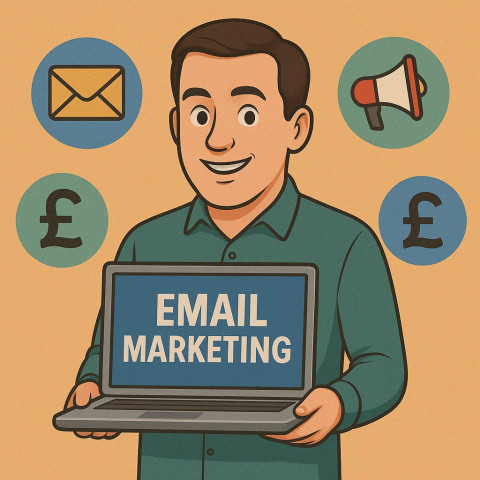
Mailchimp Alternatives Guide 2025
Is Mailchimp still the best FOR EMAIL MARKETING? Or are UK businesses find...
5 min read
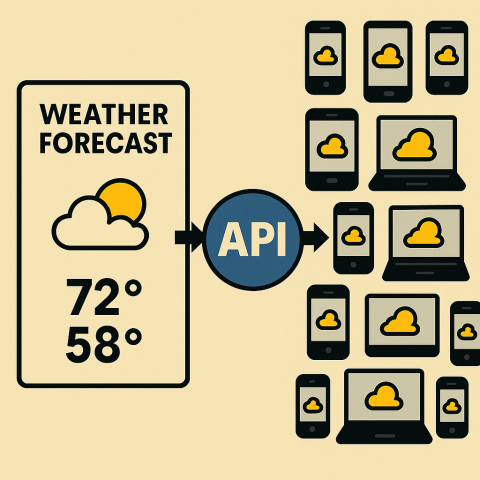
The Hidden Cost of Poor System Integration
Why Poor Integration Between Systems Is Holding Your Business Back And How...
8 min read

Admin Overload: The Silent Business Killer
The cost of manual, repetitive admin tasks In countless small and medium-s...
3 min read

